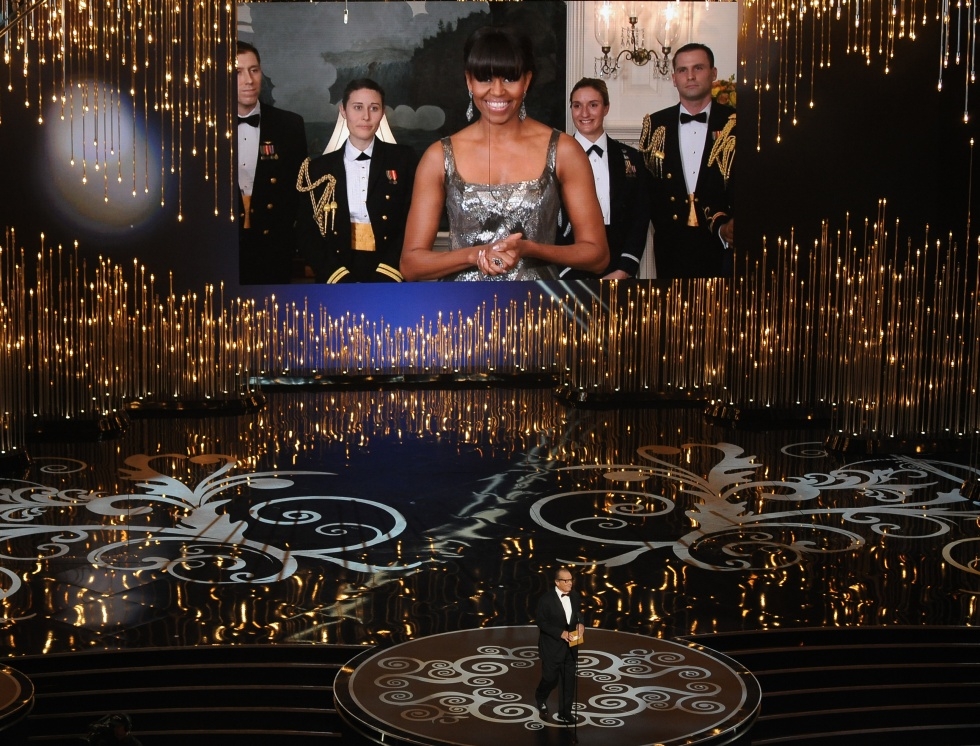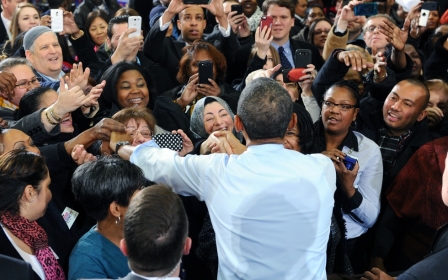Hollywood and Washington: A tale of synchronicity

Opinions and stereotypes aren’t formed in a vacuum. Special interest groups spend vast sums of money to impose their opinions (propaganda) on an unwary public that has too little time to critically analyse every issue circulated on 24/7 cable news. These opinions are planted in the media by paid-for 'talking heads' and a journalist class that is ill-equipped to thoroughly investigate every narrative that allows for opinions to be conflated with facts.
“Right-wing, neo-conservative think tanks coupled with Washington-based opinion and policy makers have covered up historical and political realities, such as the United States imperial ambitions in the Middle East by constructing the 'war on terror' as a 'clash of civilisations' that will be the latest phase in the evolution of conflict in the modern world,” writes Edward Said in 'Reflections on Exile and Other Essays.'
Hollywood plays its part, too. Reel Bad Arabs: How Hollywood Vilifies a People is a documentary that is based on a book, of the same title, by Jack Shaheen. It investigates how Hollywood “corrupts or manipulates the image of Arabs.” In film and television, Arabs are victims of what is called the “Three B Syndrome:” They are portrayed as bombers, belly dancers, or [oil] billionaires. “This image that is characterised by showing Arabs either as bandits or as a savage, nomadic race, or shows Arab women as shallow belly dancers serving evil, naïve, and greedy Arab sheiks. Most important is the image of the rifle in the hands of Arab ‘terrorists,’ say the documentary producers. “The film then explains the motivations behind these stereotypes about Arabs, and their development at key points in American history, as well as why it is so important today.”
Given less than four percent of Americans travel overseas, it is more than probable that a majority of Americans have formed their opinions of the Middle East based on the propaganda of right wing, neo-conservative, pro-Israel think tanks, Hollywood, or a combination of both. It is these opinions that provide US policy makers the space to carry out the self-defeating 'war on terrorism' on behalf of those who fund the electoral campaigns of these said US policy makers. These include weapon systems manufacturers, military contractors, petroleum corporations, and the Israel lobby.
“Although Hollywood’s view of the Orient has been discussed in terms of 'the Arab image,' there has been little discussion concerning the intersection of imperial and gender discourses. Hollywood’s view of the Orient is not simply symptomatic of colonialist imagination but also a product of the (Western) male gaze. Sexual difference has been a key component in the construction of the East as Other and the West as (Ideal) Ego,” writes Ella Shohat in an essay titled 'Gender in Hollywood’s Orient.'
Shohat argues that Hollywood’s portrayal of Arabs goes hand-in-hand with the state’s imperial desires. In other words, there is synchronicity in the way America’s ruling elite eye the economic spoils of the Middle East and the way Hollywood portrays Arabs. “The recurrent figure of the veiled woman emerged as a central representation within mid-twentieth century US popular culture as symbol of ‘mysterious inaccessibility’ that has come to allegorise the availability of Eastern land for Western penetrating knowledge and possession,” writes Shohat.
In Race and Arab Americans Before and After 9/11, the authors argue that the “rape-and-rescue trope,” by which virginal white women, and at times dark women, are rescued by the “civilised West” from dark men, has been a consistent theme in Hollywood for the past century. Shohat argues that the rape-and-rescue fantasy “catalyses the narrative role of the Western liberator as integral to the colonial rescue fantasy. In the case of the Orient, it also carries theological overtones of the inferiority of the polygamous Islamic world to the Christian world as encapsulated by the celibate priest of the monogamous couple.”
Shaheen argues that shifts in US imperial ambitions in the Middle East paralleled shifts in “corporate media representation of ‘the Arab.’” In the late nineteenth and early twentieth centuries, the scantily dressed belly dancer was used by Hollywood to titillate Victorian Americans.
From the 1970s, the oil billionaire sheik became the popular image. It was in the 70s America suffered its first 'oil shock' when OPEC punished America for its support of Israel during the 1973 Yom Kippur War, and its second in 1979 as fallout from the Iranian revolution.
From the 1980s, the Arab terrorist became the predominant stereotype. Shaheen’s research demonstrates that since the 1970s, Hollywood has increasingly portrayed Arabs as “not only culturally backward, uncivilised, exotic, or potentially dangerous, but also as potential enemies of the US nation.” In 'Ethnic Archetype and the Arab Image,' Ronald Stockton reminds us that the 1980s brought cartoons that portrayed Palestinians as “rats malevolently entering a house or caught in a trap, or as fleas infesting a region and being exterminated.”
Chris Hedges, a Pulitzer Prize winning journalist and former bureau chief for the New York Times in the Middle East, warns that the dehumanisation of Muslims in US social culture “allow us to exult in the illusion of our own moral and cultural superiority,” which is the precise objective of those who benefit most from US imperial overreach. “The fantasy of an enlightened West that spreads civilisation to a savage world of religious fanatics is not supported by history,” contends Hedges. “The worst genocides and slaughters of the last century were perpetrated by highly industrial nations. Muslims, including those of Saddam Hussein’s brutal regime, have a long way to go before they reach the body count of the secular regimes of Nazis, the Soviet Union, or the Chinese communists...We do not treat life with greater sanctity than those we belittle. There are aged survivors in Hiroshima and Nagasaki who can tell us something about our high moral values and passionate concern for innocent human life, about our own acts of terrorism.”
Arabs of today are experiencing the same media treatment Asian Americans experienced in the middle twentieth century. Stereotypes and an intensified focus on the 'other' are dependent upon whoever the state declares to be the foreign enemy. “Stereotypes of Asian Americans have also morphed and changed through the decades. Asian Americans have been depicted as the enemy and the perpetual foreigner, especially in the World War II-era. But current media portrayals of Asians and Asian Americans can be seen as more 'positive,' that is if Asians are represented at all,” reminds Matthew Jacob Stiffler.
Today, Hollywood and the motives of the imperialist US state are inextricably entwined. It’s almost impossible to tell where one begins and the other ends. In 2013, “Argo,” a fictitious and dramatised account of the 1979 Iranian hostage crisis, won the Academy Award for Best Picture. It was the US First Lady, Michelle Obama who opened the envelope to announce Argo as the winner. The question is: Where is the wall separating media and the state? There is certainly a valid discussion to be had here.
These stereotypes and media portrayal of Arabs not only provide the space and cover for US imperialist projects abroad, they also provide the space and cover for civil rights violations at home.
- CJ Werleman is an opinion writer for Salon, Alternet, and the author of Crucifying America, and God Hates You. Hate Him Back. Follow him on twitter: @cjwerleman
The views expressed in this article belong to the author and do not necessarily reflect the editorial policy of Middle East Eye.
Photo: First Lady Michelle Obama presents award for best picture 24 Feb 2013 (AFP)
Middle East Eye propose une couverture et une analyse indépendantes et incomparables du Moyen-Orient, de l’Afrique du Nord et d’autres régions du monde. Pour en savoir plus sur la reprise de ce contenu et les frais qui s’appliquent, veuillez remplir ce formulaire [en anglais]. Pour en savoir plus sur MEE, cliquez ici [en anglais].





